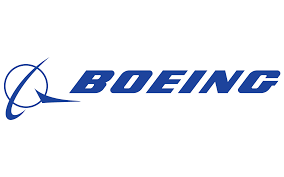
Six Sigma is a data-driven, continuous improvement approach that aims to reduce defects and improve quality in manufacturing and service processes. This blog delves into how Six Sigma in aerospace industry is leveraging to enhance its processes, increase efficiency, and provide better products and services to customers.
We will also explore the challenges faced by the aerospace industry in implementing Six Sigma and how they overcome them. The blog aims to provide a comprehensive understanding of the role of Six Sigma in the aerospace industry and its impact on its operations.
Overview of the Aerospace Industry
The aerospace industry is a complex and dynamic sector that encompasses the design, development, manufacture, and maintenance of aircraft, spacecraft, and their components. It includes military and commercial applications and is a major contributor to the global economy.
The industry includes large multinational corporations and small and medium-sized enterprises (SMEs). It also employs a highly skilled workforce, with individuals working in fields such as engineering, design, manufacturing, and maintenance.
The aerospace industry is constantly evolving, with new technologies being developed and introduced and new markets emerging. Some of the industry’s key trends and challenges include increased competition, the need for greater efficiency and sustainability, the growing demand for air travel, and the demand for more sophisticated military aircraft.
An Overview of Six Sigma in Aerospace Industry
Six Sigma is a quality management methodology that uses statistical tools and techniques to reduce defects and improve efficiency in business processes. Six Sigma is used in the aerospace industry to improve manufacturing processes, supply chain management, customer satisfaction, and overall operational efficiency.
Using Six Sigma methodologies, aerospace companies aim to reduce waste, increase profitability, and provide high-quality products to their customers. The principles of Six Sigma have been applied in various aspects of the aerospace industry, including aircraft production, maintenance, and support services.
The goal of Six Sigma in the aerospace industry is to provide safe and reliable products to customers while continuously improving processes and customer satisfaction.
Take the step towards mastering Quality Management. Enroll in Six Sigma and Quality Management Courses by Invensis Learning Now!
The Role of Six Sigma in the Aerospace Industry
In the aerospace industry, Six Sigma can play a critical role in ensuring the safety and reliability of aircraft and aerospace systems.
Using Six Sigma tools and techniques, aerospace companies can identify and eliminate sources of variation and error, improve efficiency, and increase customer satisfaction. This can improve competitiveness, reduce costs, and increase aerospace companies’ revenue.
Additionally, Six Sigma can help aerospace companies comply with regulations and standards,
such as those set by the Federal Aviation Administration (FAA).
Improving Efficiency and Reducing Costs in the Aerospace Industry Using Six Sigma
The main goal of Six Sigma in the aerospace industry is to improve efficiency and reduce costs by reducing defects and waste in processes. Six Sigma uses data-driven methods and statistical analysis to identify the root causes of problems and eliminate them.
By doing so, Six Sigma can help aerospace companies streamline their processes, reduce errors, and improve overall quality. This can lead to increased efficiency, reduced costs, and improved competitiveness for the aerospace company.
Additionally, Six Sigma can help aerospace companies comply with regulations and standards, such as those set by the Federal Aviation Administration (FAA), which can further reduce costs and improve efficiency.
Key Challenges and Solutions in Implementing Six Sigma in the Aerospace Industry
Here is a table summarizing the challenges of Six Sigma implementation in the aerospace industry and ways to overcome them:
| Challenge | Solution |
| Complex processes and systems | Develop a comprehensive understanding of the process flow and conduct a thorough process mapping exercise. Engage experts from different departments to identify opportunities for improvement. |
| High cost and long lead times | Prioritize projects with the highest impact on the bottom line and ensure that Six Sigma implementation aligns with overall business objectives. Use data to justify the investment and track the return on investment. |
| Resistance to change | Communicate the benefits of Six Sigma and involve employees in the implementation process. Provide training and support to help employees understand and embrace the changes. |
| Lack of data | Develop data collection and analysis methods to gather the information required for Six Sigma. Ensure that data is accurate, relevant, and accessible to all stakeholders. |
Six Sigma in Aviation Industry:
Amazed by the use case of Lean Six Sigma in the Aviation Industry?
Achieve quality excellence by enrolling in following Lean Six Sigma Certification courses by Invensis Learning Now!
Case Studies of Successful Six Sigma Implementation in the Aerospace Industry
Boeing
Boeing’s implementation of Six Sigma in the aerospace industry was a comprehensive effort to improve efficiency, reduce waste, and enhance product quality. The company adopted a company-wide approach to Six Sigma, ensuring that all aspects of its operations, from engineering and manufacturing to supply chain management and customer service, were aligned with Six Sigma principles.
One of the most notable successes of Boeing’s Six Sigma implementation was streamlining its production process for the 787 Dreamliner. Using Six Sigma tools and methodologies, the company significantly reduced the aircraft’s manufacturing time while improving its overall quality.
For example:
The company used data-driven approaches, such as statistical process control and the design of experiments, to identify and eliminate inefficiencies in the production process.
This resulted in a 50% reduction in manufacturing time and significantly improved product quality.
Another successful project at Boeing was the reduction of defects in the production of the 787 using Six Sigma tools, such as root cause analysis and process mapping, the company was able to identify and eliminate sources of defects in the production process.
This resulted in a 60% reduction in the number of defects, which improved product quality and reduced the amount of time and resources needed to rectify these defects.
Overall, Boeing’s successful implementation of Six Sigma in the aerospace industry has demonstrated the power of data-driven approaches in enhancing efficiency, reducing waste, and improving product quality.
The company’s commitment to continuous improvement, coupled with its successful implementation of Six Sigma, has likely contributed to its continued success in the aerospace industry.
Honeywell Aerospace
Honeywell Aerospace’s implementation of Six Sigma in the aerospace industry was highly successful, particularly in supply chain management. Through Six Sigma methodologies, such as process mapping, root cause analysis, and statistical process control, the company was able to improve the performance of its suppliers and reduce costs significantly.
One notable success of Honeywell Aerospace’s Six Sigma implementation was reducing supplier-related quality issues.
By using data-driven approaches to identify and eliminate sources of defects in the supply chain, the company reduced the number of supplier-related quality issues by 85%.
This was a significant accomplishment, as reducing supplier-related quality issues improves product quality and reduces the amount of time and resources needed to rectify these issues.
Another successful project at Honeywell Aerospace was the improvement of its overall supply chain efficiency. Using process mapping and root cause analysis, the company was able to identify and eliminate inefficiencies in its supply chain process.
This resulted in improved supplier performance, reduced lead times, and increased productivity, ultimately benefiting the company’s bottom line.
Overall, Honeywell Aerospace’s successful implementation of Six Sigma in the aerospace industry has demonstrated the power of data-driven approaches in improving supplier performance, reducing costs, and enhancing overall supply chain efficiency.
In addition, the company’s commitment to continuous improvement and its successful implementation of Six Sigma has likely contributed to its continued success in the aerospace industry.
The Future of Six Sigma in the Aerospace Industry
The future of Six Sigma in the aerospace industry is bright as the industry continues to evolve and face new challenges. The industry is known for its high standards and rigorous processes, making Six Sigma a natural fit.
The focus on continuous improvement and the use of data-driven decision-making are:
- Key components of the Six Sigma methodology
- Making it well-suited for the aerospace industry’s need for efficiency
- Cost-effectiveness
- Quality.
In the future, the aerospace industry will likely continue to adopt and integrate Six Sigma as a key part of its operations. As technology advances, data and analytics will become even more important in the industry, and Six Sigma will continue to be a valuable methodology for analyzing and improving processes.
Additionally, as competition increases and customer expectations rise, the aerospace industry will need to find new ways to improve its processes and remain competitive. Six Sigma provides a structured and proven method for identifying and eliminating waste and improving efficiency, making it a valuable tool for staying ahead of the competition.
Overall, the future of Six Sigma in the aerospace industry is bright. Its use will continue to grow as the industry faces new challenges and looks for ways to improve its processes and remain competitive.
Conclusion
Six Sigma has been a highly successful methodology in the aerospace industry, with companies such as Boeing, GE Aerospace, Honeywell Aerospace, and Airbus achieving significant improvements in efficiency, waste reduction, and product quality through its implementation.
Its data-driven approach and focus on continuous improvement have allowed these companies to identify and eliminate inefficiency and defects in their operations. This has resulted in improved manufacturing times, reduced lead times, and increased productivity, contributing to their continued success in the aerospace industry.
















